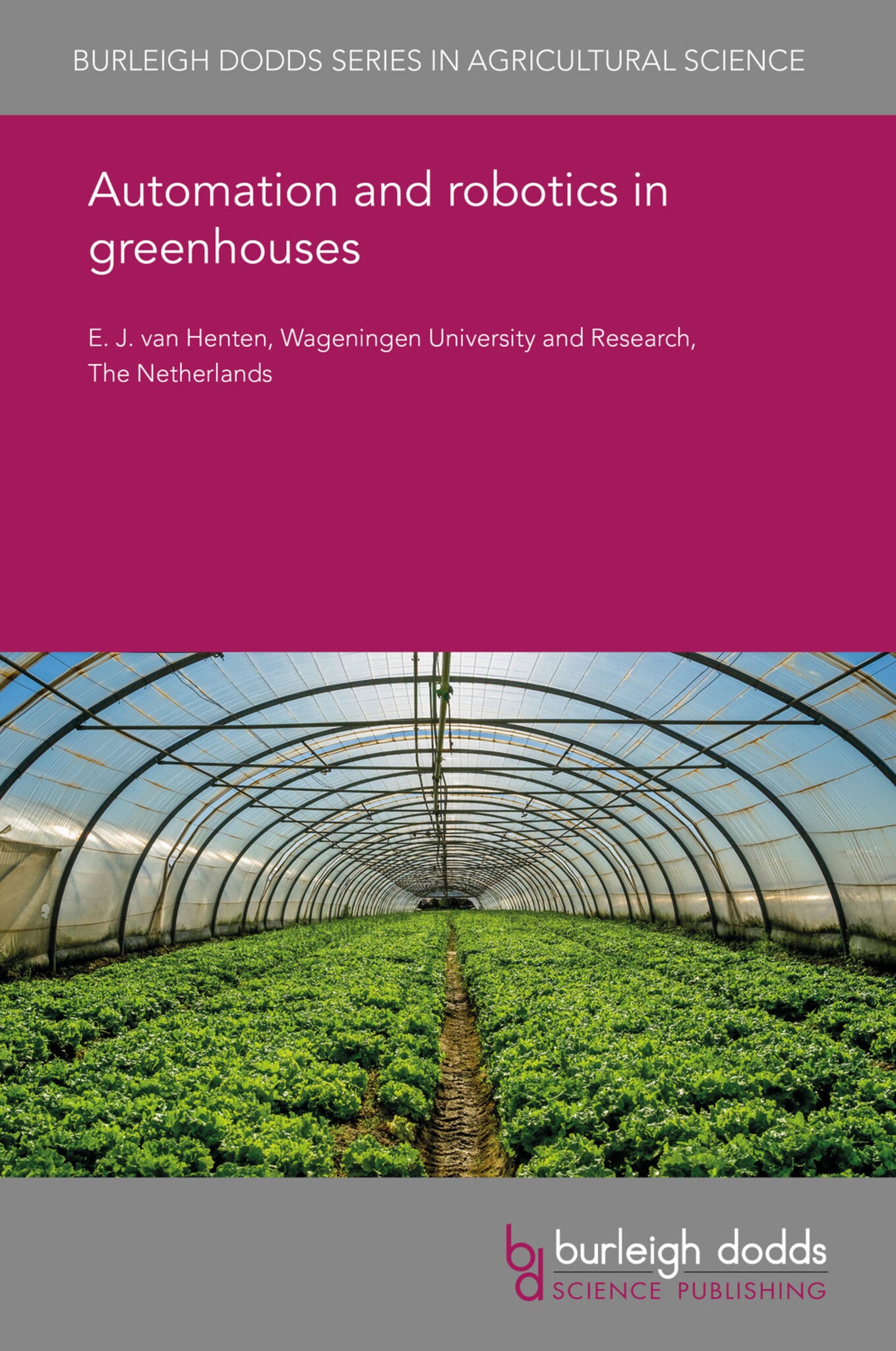We're sorry. An error has occurred
Please cancel or retry.
Automation and robotics in greenhouses
Regular price
£25.00
Sale price
£25.00
Regular price
£25.00
Unit price
/
per
Sale
Sold out
Re-stocking soon
This chapter provides an overview of the state of the art of automation technology in protected cultivation and looks ahead to future directions for achieving further progress in this field. The ch...
Read More

Some error occured while loading the Quick View. Please close the Quick View and try reloading the page.
Couldn't load pickup availability
- Format:
-
09 September 2019

This chapter provides an overview of the state of the art of automation technology in protected cultivation and looks ahead to future directions for achieving further progress in this field. The chapter provides a generic description of the greenhouse crop production process and then uses it as a reference for reviewing the state of the art in automation and robotics. The chapter explains those tasks in protected cultivation that have already been automated and identifies those tasks that are predominantly still the domain of human labour. The chapter outlines the requirements for the technology capable of doing these tasks. The chapter describes the ongoing research in automation and robotics in protected cultivation and concludes with a description of the challenges facing high-tech systems in protected cultivation.

Price: £25.00
Publisher: Burleigh Dodds Science Publishing
Imprint: Burleigh Dodds Science Publishing
Series: Burleigh Dodds Series in Agricultural Science
Publication Date:
09 September 2019
ISBN: 9781838799298
Format: eBook
BISACs:
TECHNOLOGY & ENGINEERING / Agriculture / Sustainable Agriculture, Agronomy and crop production, TECHNOLOGY & ENGINEERING / Agriculture / Agronomy / Crop Science, Sustainable agriculture

1 Introduction 2 A crop production cycle 3 State of the art in automation and robotics 4 Analysis of state of the art in automation and robotics 5 Some examples of research and development in automation and robotics 6 Challenges and future trends 7 Conclusion 8 Where to look for further information 9 References



